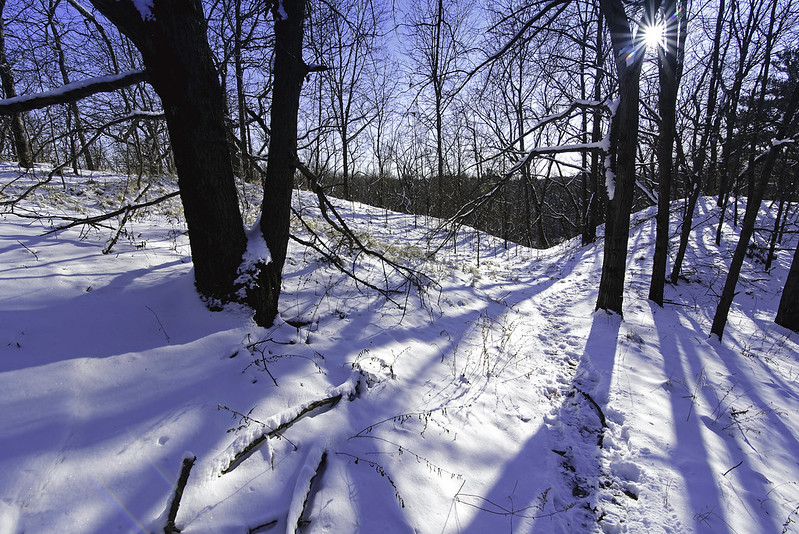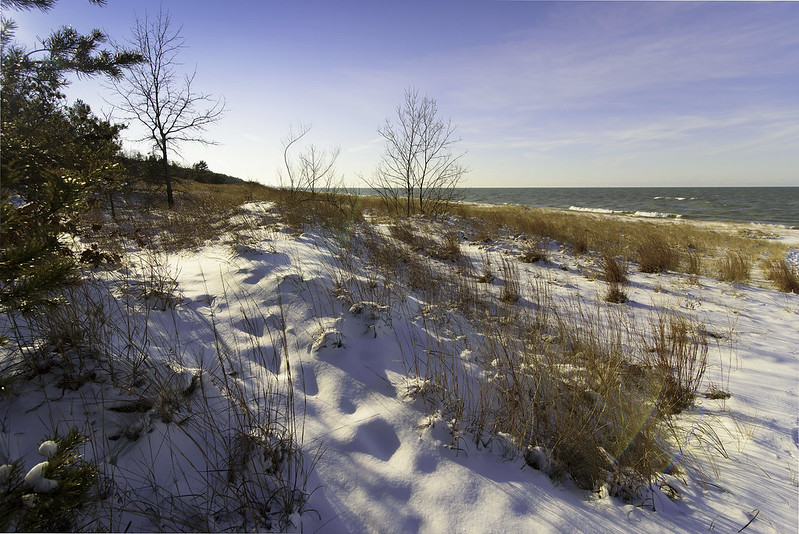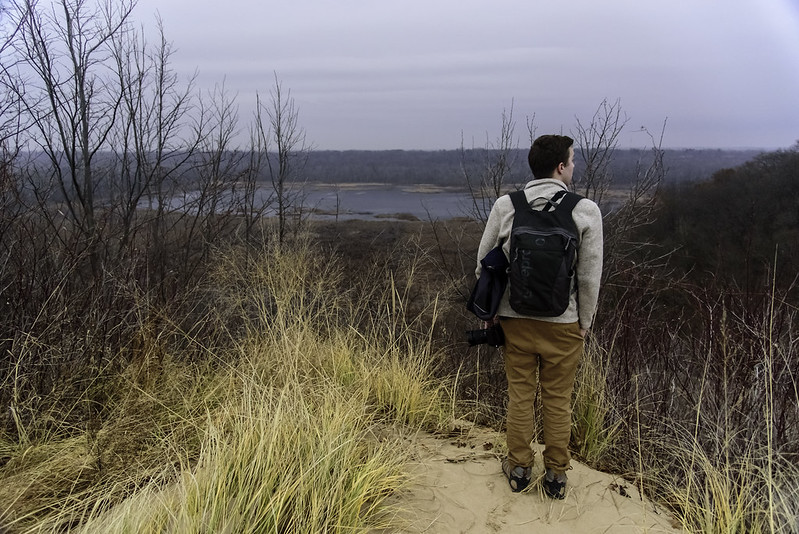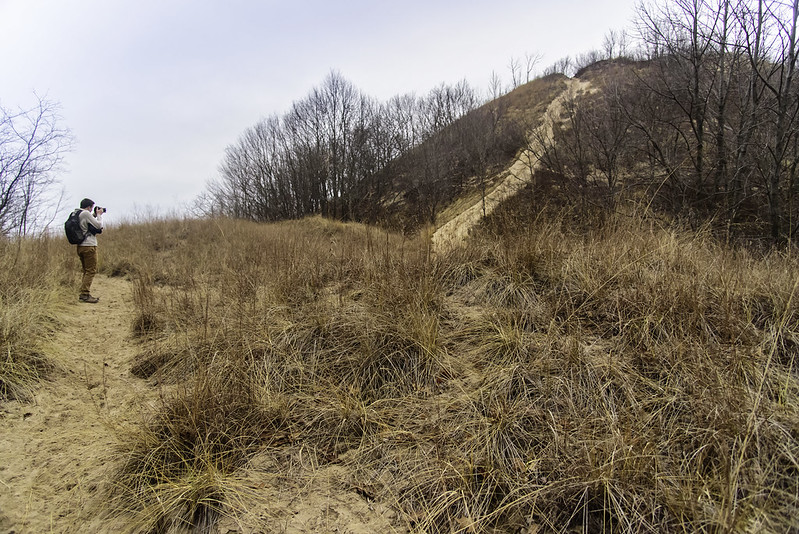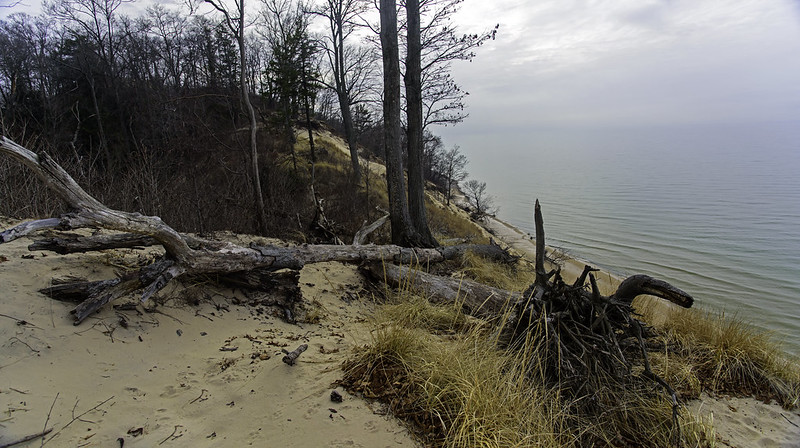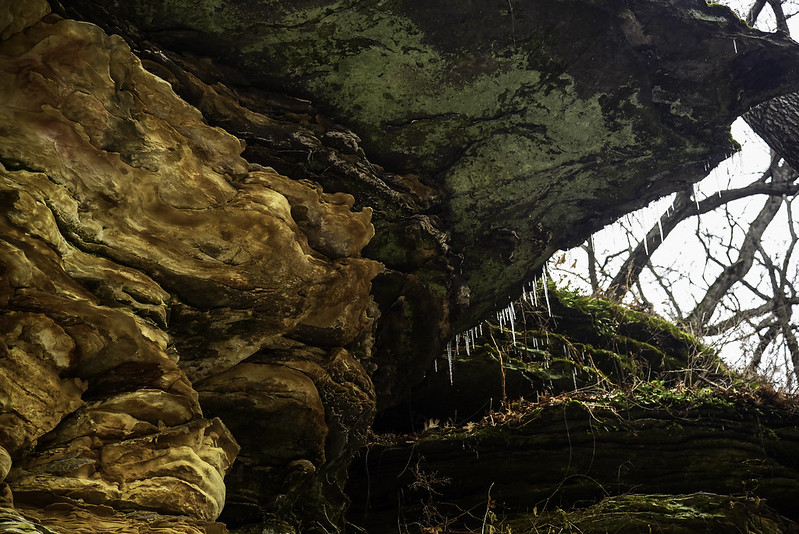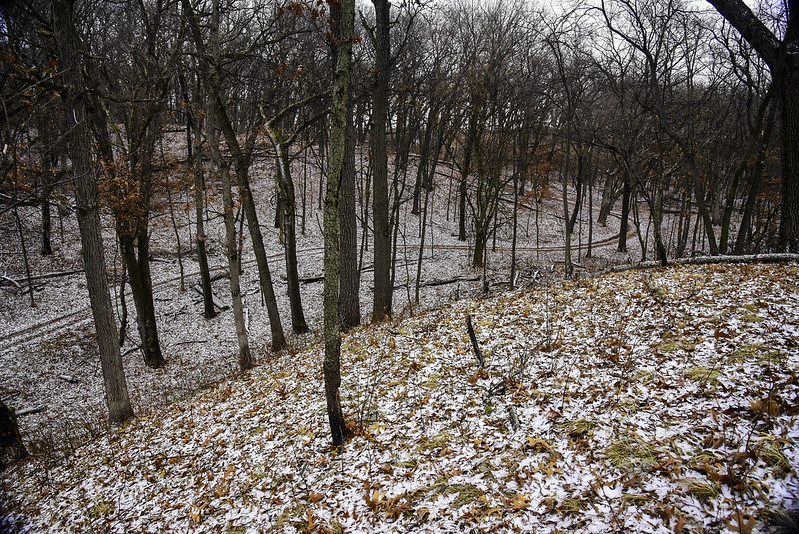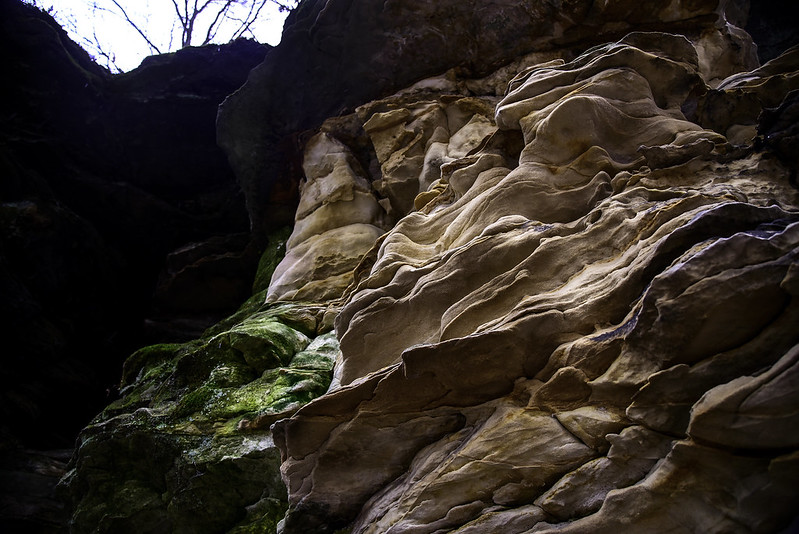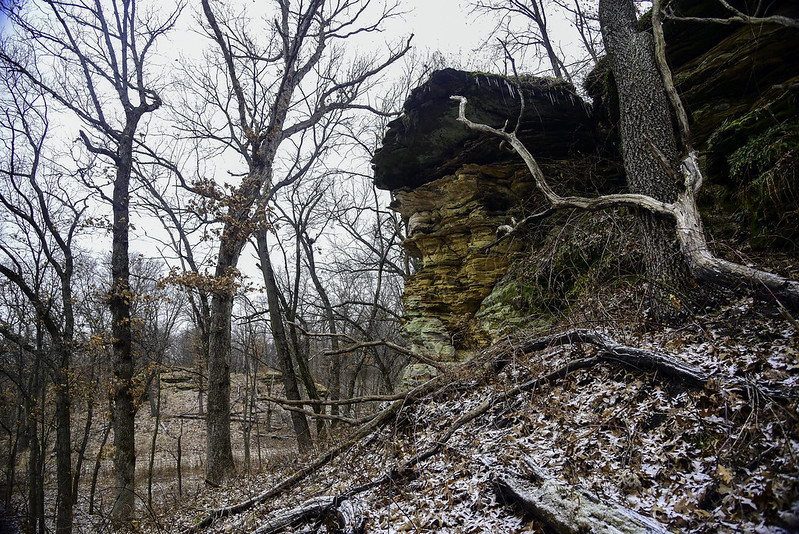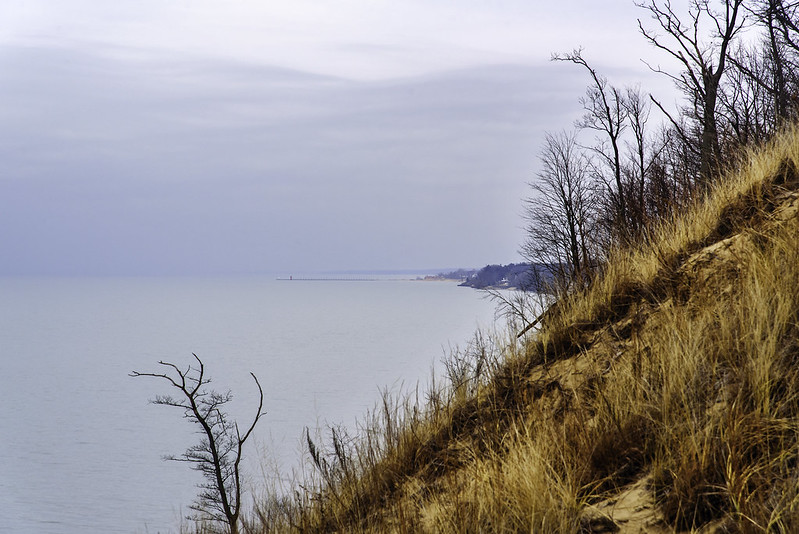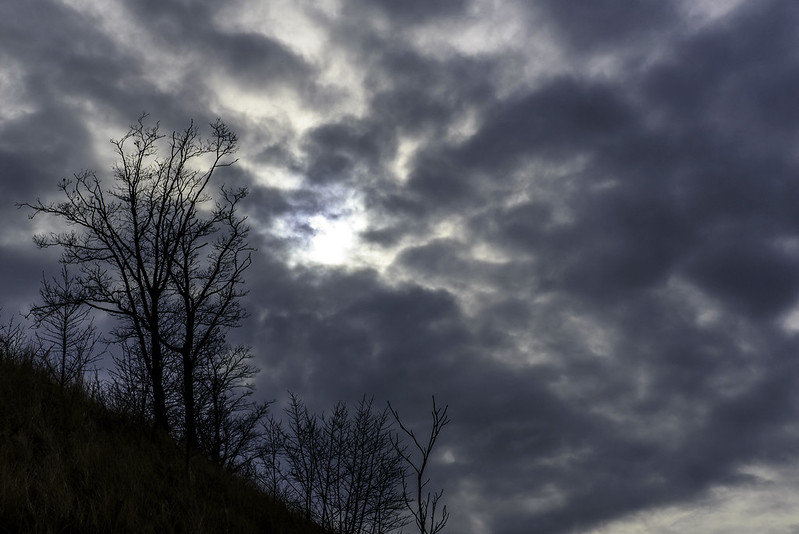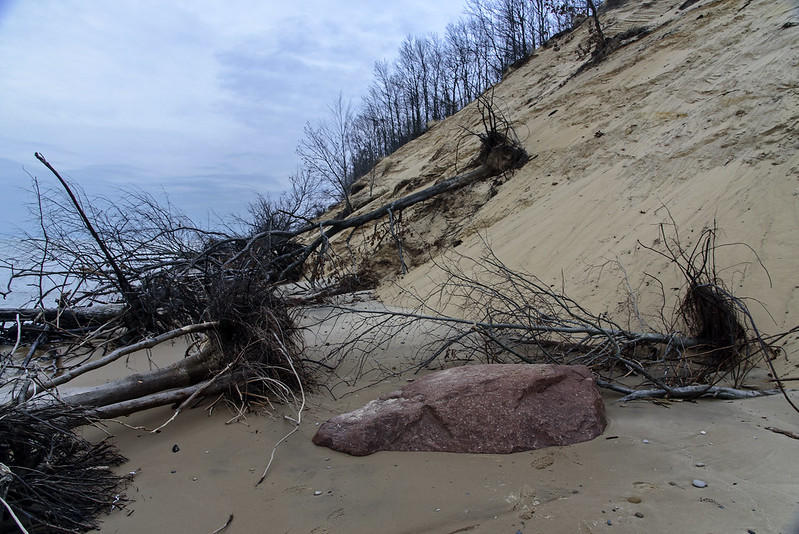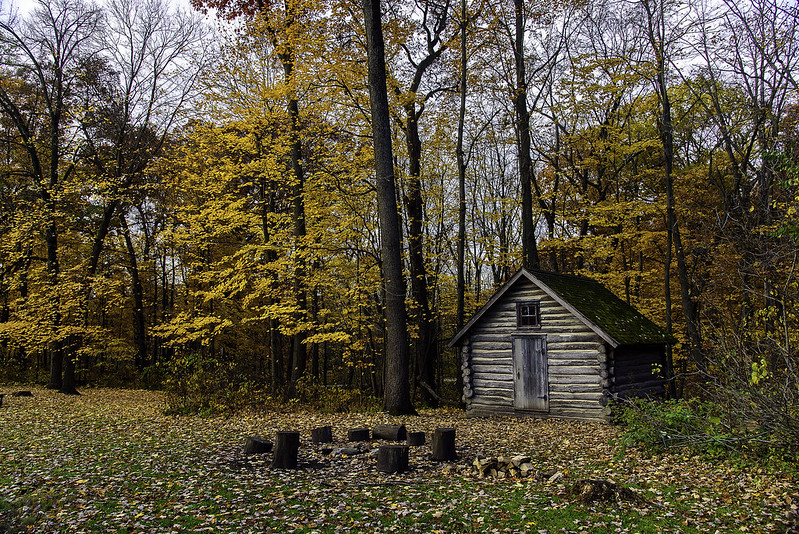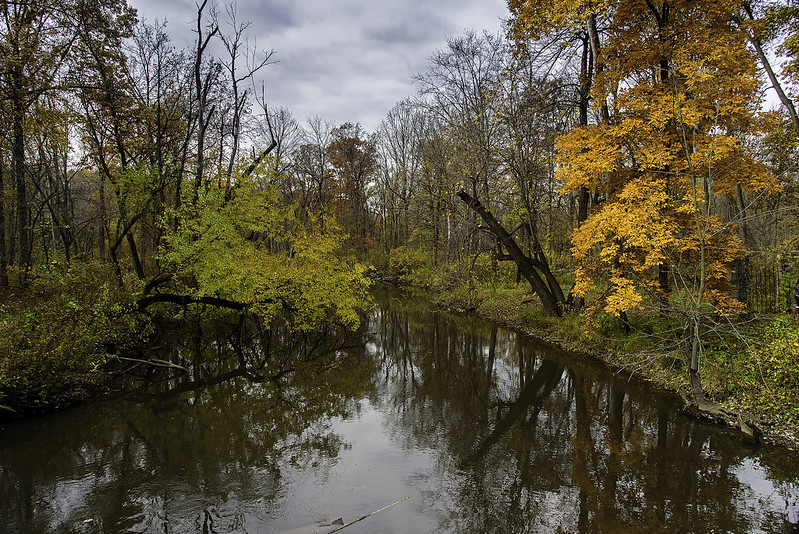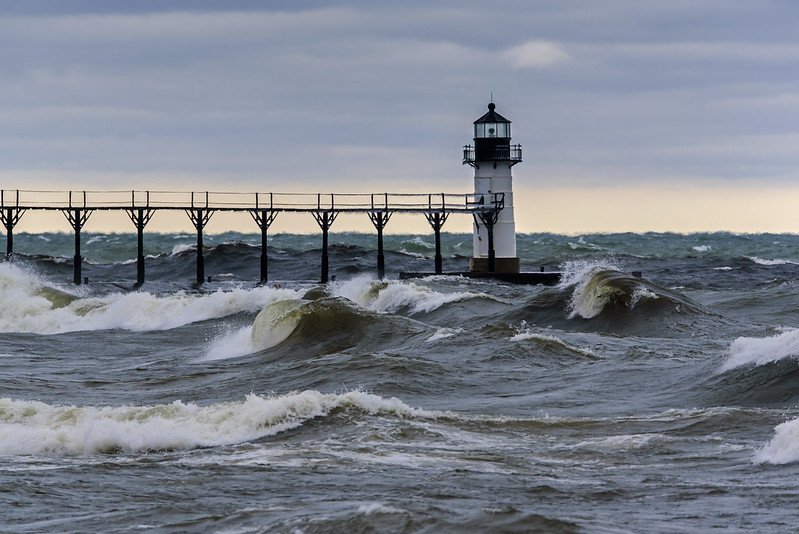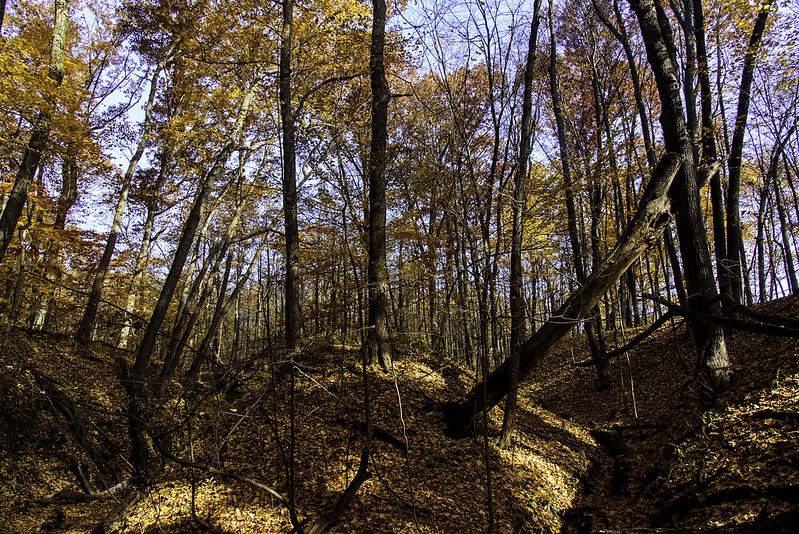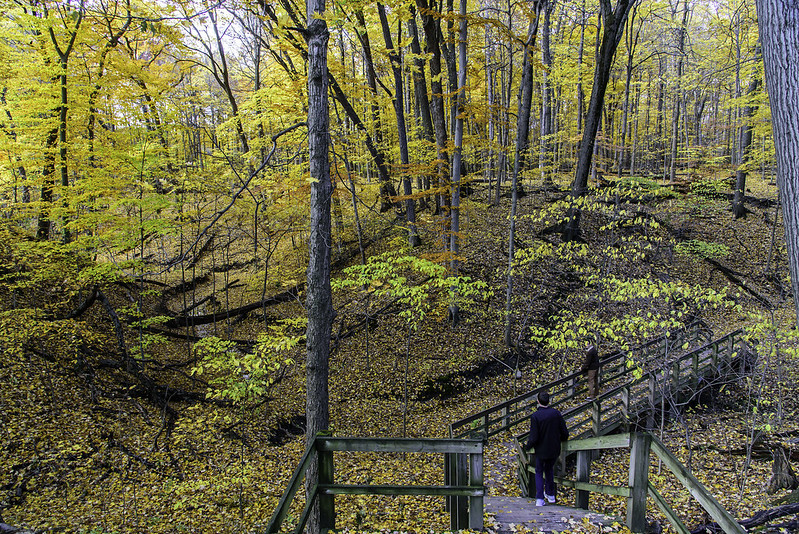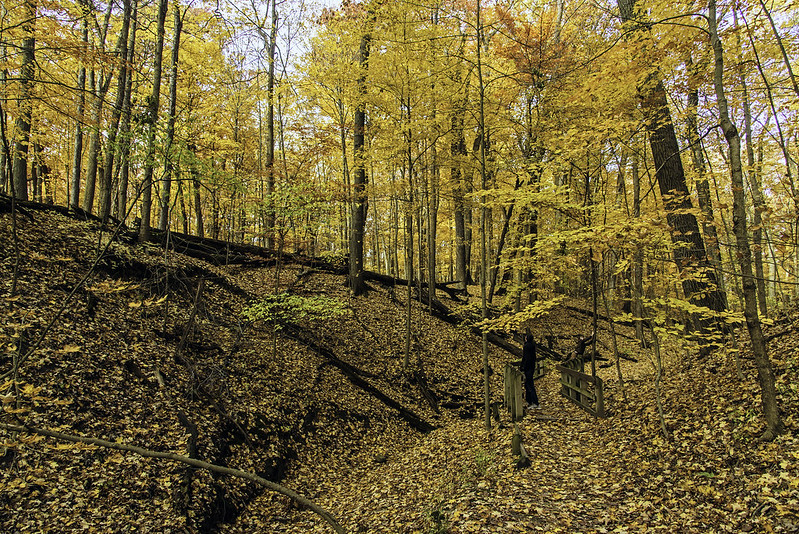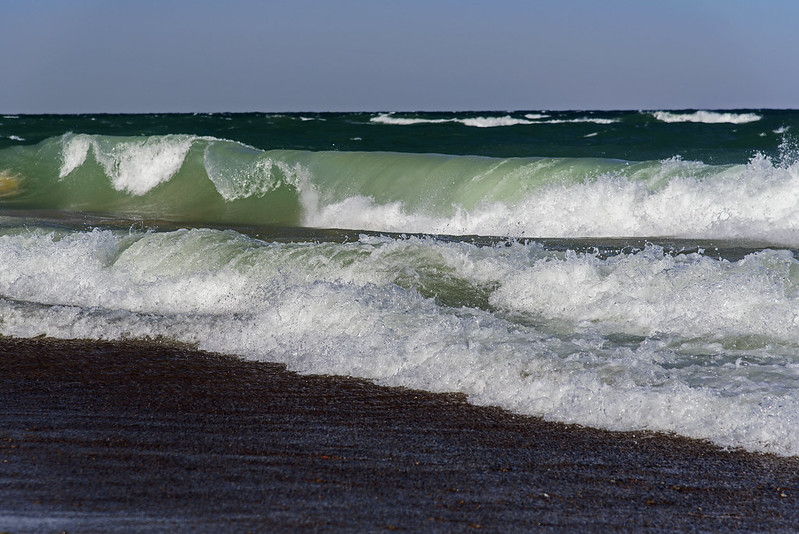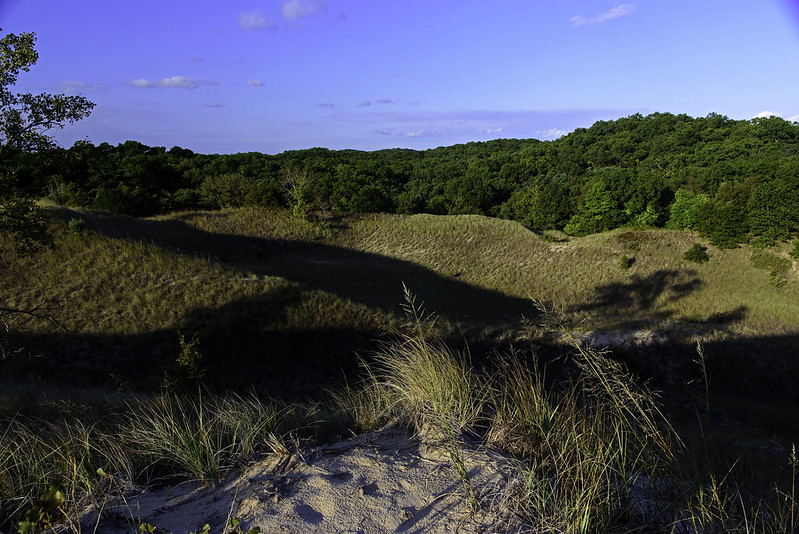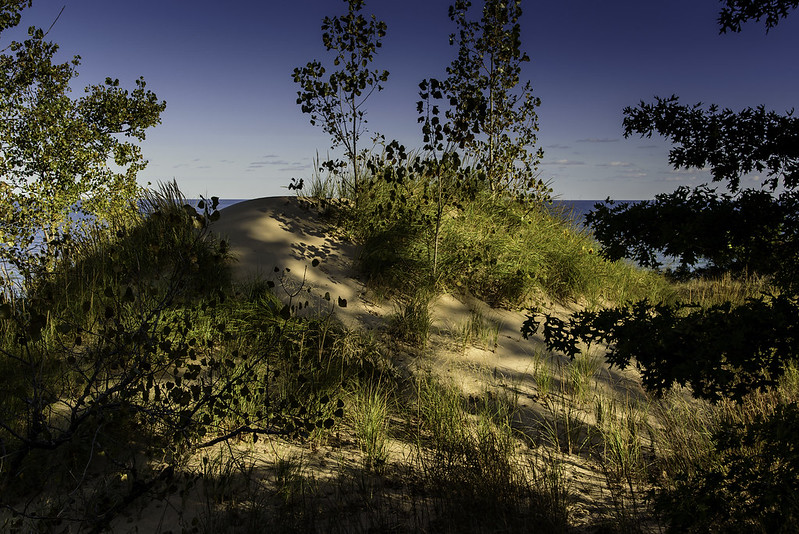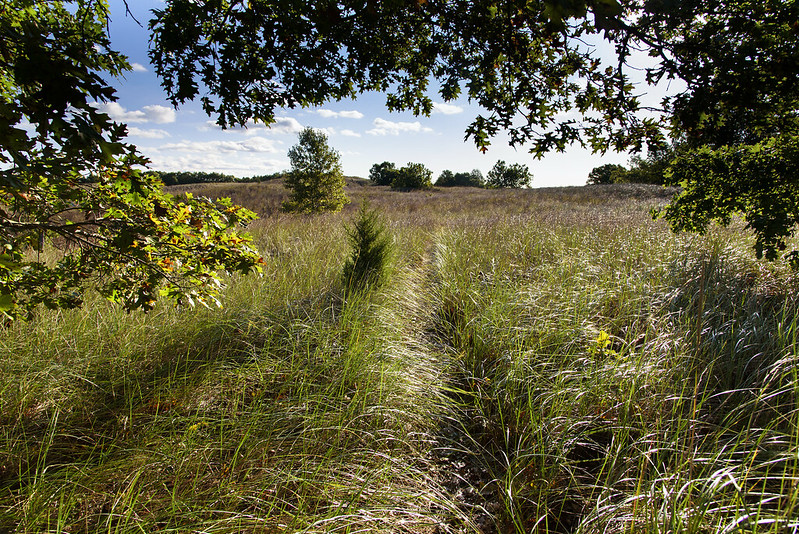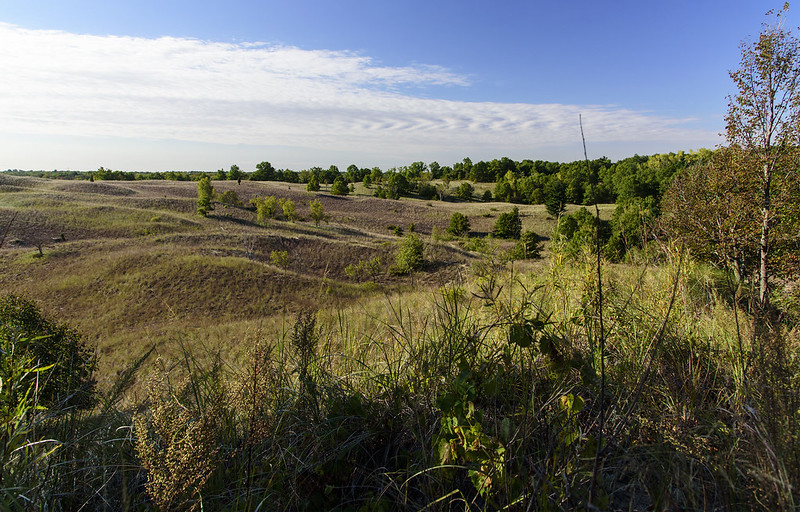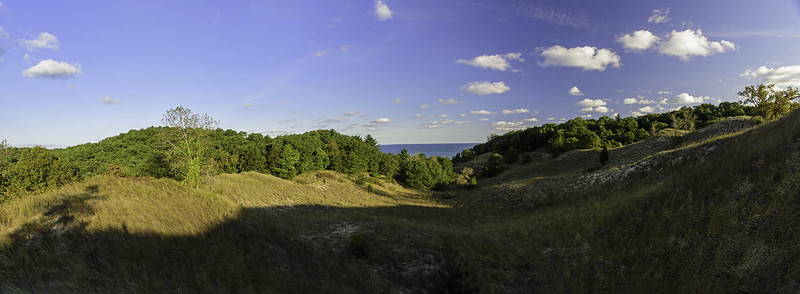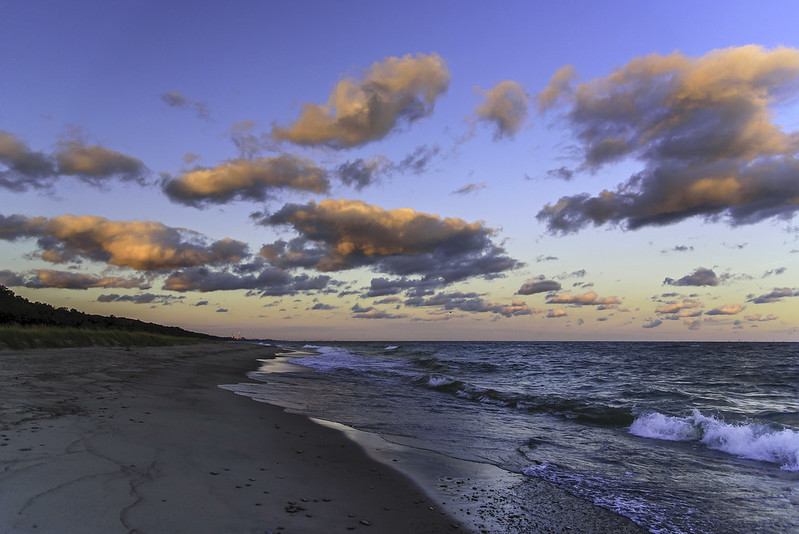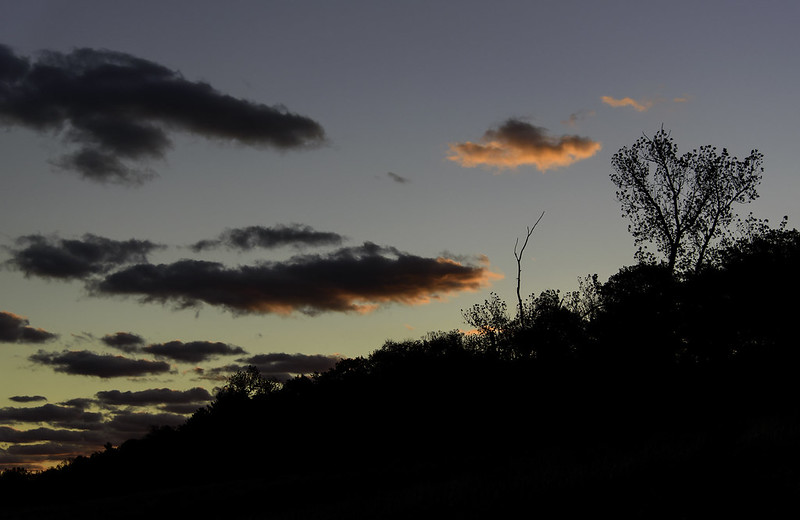
Part of the 3,600 acre Nachusa Grasslands, a large, successful restored prairie project in north central Illinois, the Stone Barn Savanna offers a hike through wooded bluffs and rolling hills. Sandstone bluffs appear suddenly from the landscape, some free standing, others are one end of large, grass and wooded hills.
Visitors to Nachusa are encouraged to explore the land. Mowed grass trails can easily be followed, but hiking off trail is allowed as well, providing you don't climb the fragile sandstone, these can break easily causing damage to the formation as well as injury or death to the climber.
We followed the trails to places of interest, then carefully explored these areas off trail. This was not always easy as the landscape is rolling, and filled with prairie roses and other barbed plants. Don't wear shorts here!
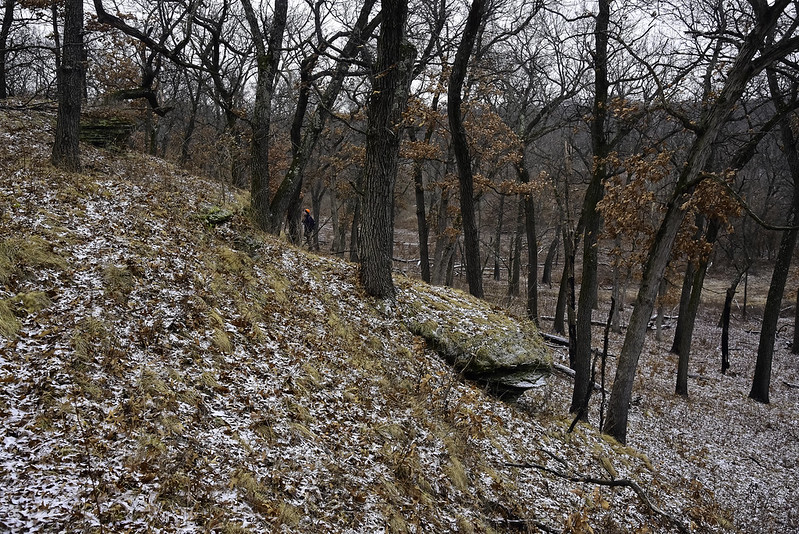
Sometimes these bluffs aren't easily noticeable because they are covered in soil, grass, and trees. This allowed us to safely explore the tops of some bluffs, and walk the ridges.
Some evidence of wildlife was found on the tops of the bluffs, including well worn animal trails, and animal scat near small crevasses in the rock. At one point we discovered a trail camera pointed at a particular opening in the rock; I'm curious as to what they find.
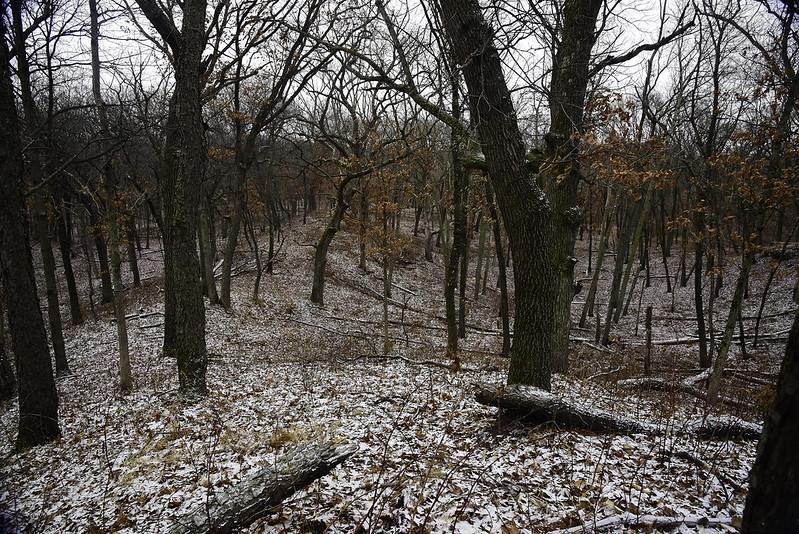
It's refreshing to find a nature preserve that allows visitors to explore everywhere on their own. The access areas and parking areas are small, so not too many visitors can hike at once, but this is probably a good thing - it keeps the area pristine, quiet, and free of crowds.
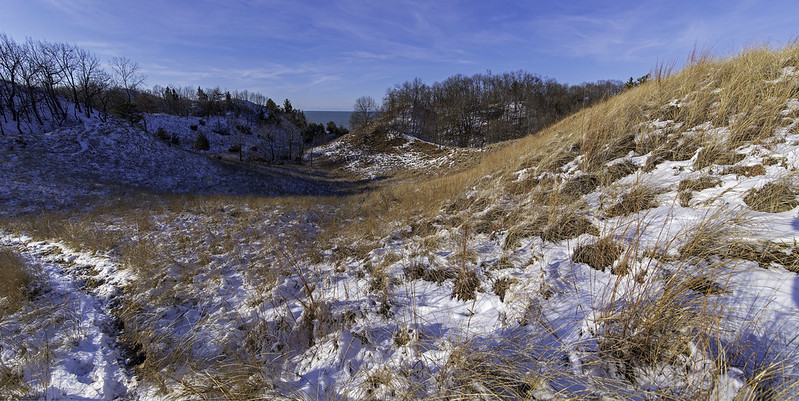 One generally doesn't associate the Indiana Dunes National Lakeshore with wide open spaces, but that's just what you'll find when you hike a bit off the popular and well traveled trails. Beginning from the beach, we hiked up through some wooded dunes, along the ridges to an area filled with Marram grass. A quick run up the grassy dune and we encountered the vast valley behind the fore dunes hidden from the beaches. This is where you begin to get an idea of the size of this natural area along the shore of Lake Michigan. From the trail head to this point in our hike, we walked a bit over a mile and spent around 40 minutes of time exploring the area. Shorter hikes are possible on these winding trails, but we were up for a much longer one on this sunny winter day.
One generally doesn't associate the Indiana Dunes National Lakeshore with wide open spaces, but that's just what you'll find when you hike a bit off the popular and well traveled trails. Beginning from the beach, we hiked up through some wooded dunes, along the ridges to an area filled with Marram grass. A quick run up the grassy dune and we encountered the vast valley behind the fore dunes hidden from the beaches. This is where you begin to get an idea of the size of this natural area along the shore of Lake Michigan. From the trail head to this point in our hike, we walked a bit over a mile and spent around 40 minutes of time exploring the area. Shorter hikes are possible on these winding trails, but we were up for a much longer one on this sunny winter day. 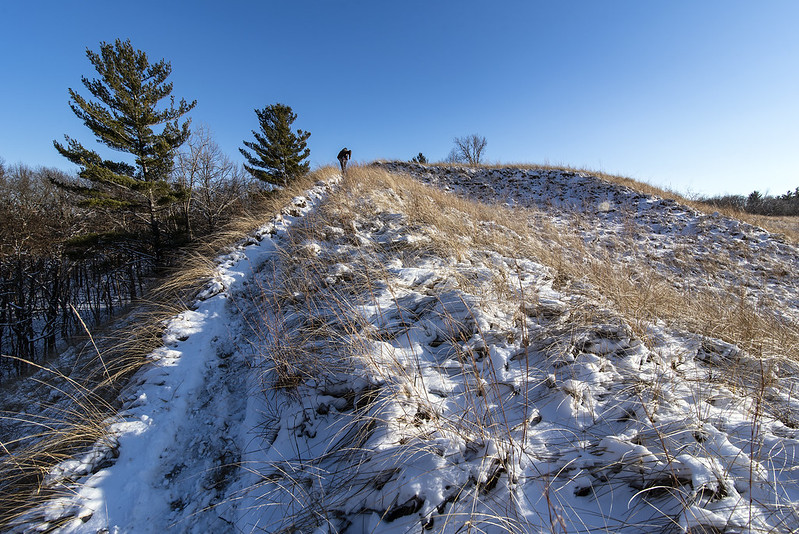 We've hiked these dunes in all seasons and in all weather, and there's always something new to experience each time we visit. Remembering to stop for a bit to take in the surroundings is an important part of these hikes. It's easy to get caught up in photography, or the need to get to a particular place in the park, but you need to stop at multiple places along the trail and just look, listen, and smell - take it all in. It's surprising what you'll experience.
We've hiked these dunes in all seasons and in all weather, and there's always something new to experience each time we visit. Remembering to stop for a bit to take in the surroundings is an important part of these hikes. It's easy to get caught up in photography, or the need to get to a particular place in the park, but you need to stop at multiple places along the trail and just look, listen, and smell - take it all in. It's surprising what you'll experience.

